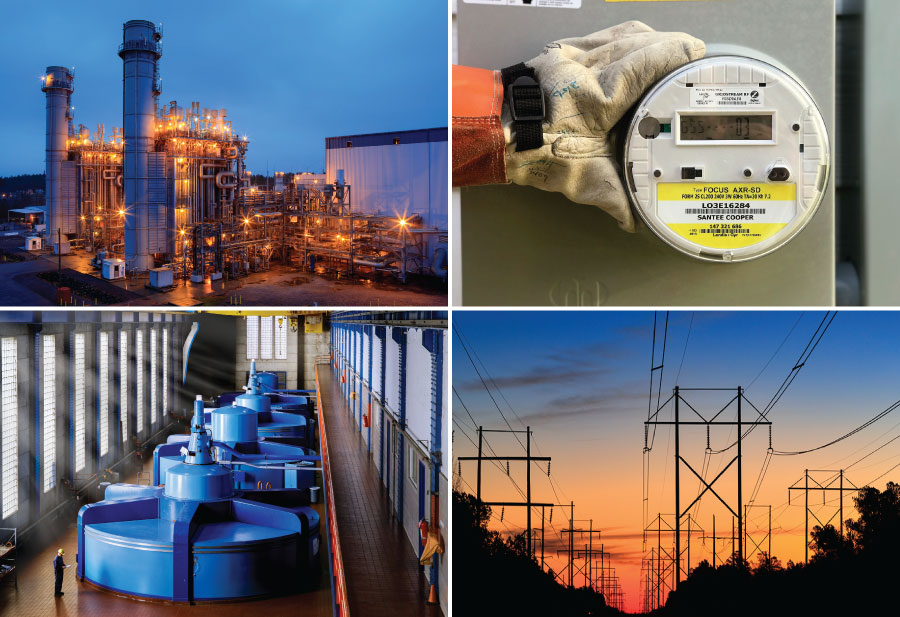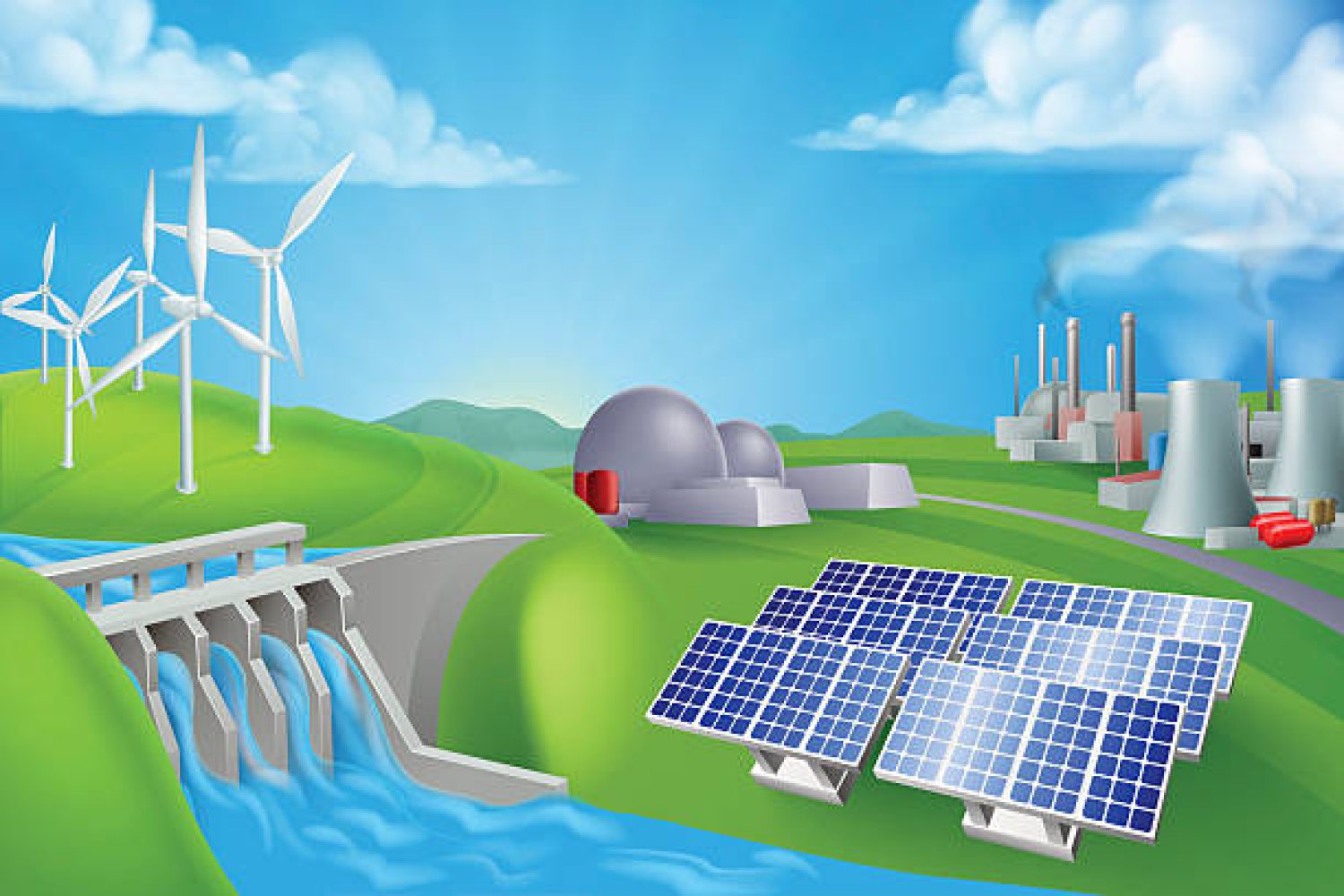Building Into Growth: How Public Power Financing Works for You – Santee Cooper

Santee Cooper’s Strategic Investment in Sustainable Energy Infrastructure
Aligning with SDG 7 and SDG 9: Ensuring Affordable, Reliable, and Sustainable Energy
- Santee Cooper is proactively developing new generation projects and resilient infrastructure to meet the increasing energy demands of South Carolina’s growing population and economy. This initiative directly supports Sustainable Development Goal 9 (Industry, Innovation, and Infrastructure).
- The primary objective is to guarantee the delivery of reliable and affordable electricity, a cornerstone of Sustainable Development Goal 7 (Affordable and Clean Energy), for current and future generations.
- By expanding the customer base concurrently with infrastructure investment, the costs are distributed more widely, promoting long-term rate affordability and ensuring equitable access to energy.
Fostering Economic Growth and Resilient Communities (SDG 8 & SDG 11)
- The investment in energy infrastructure is a critical enabler for the state’s economic expansion, supporting new homes, businesses, and large-scale industries. This directly contributes to Sustainable Development Goal 8 (Decent Work and Economic Growth).
- By providing a stable power supply, Santee Cooper underpins the development of sustainable cities and communities, in line with Sustainable Development Goal 11.
- A specialized large-load rate structure ensures that high-demand users, such as data centers, finance their own energy infrastructure needs. This prevents cost burdens on general ratepayers and promotes equitable economic development.
Implementing Responsible Production and Financial Models (SDG 12)
- Tax-Exempt Financing: As a public utility, Santee Cooper utilizes low-cost, long-term bonds, a highly efficient financing mechanism that minimizes project costs compared to investor-owned utilities, promoting responsible production patterns as outlined in SDG 12.
- Sustainable Cost Amortization: Project costs are distributed over the operational lifespan of the asset, ensuring that the beneficiaries of the infrastructure contribute to its payment over time, creating a fair and sustainable rate structure.
- Maximizing Resource Efficiency: By managing multiple projects concurrently, the utility leverages economies of scale. Furthermore, locating new facilities on existing or brownfield sites minimizes environmental impact and reduces costs by utilizing pre-existing infrastructure.
Commitment to Transparency and Stakeholder Partnership (SDG 17)
- Operating as a public power utility, Santee Cooper’s focus is centered on customer and community interests, reflecting the principles of Sustainable Development Goal 17 (Partnerships for the Goals).
- All potential rate adjustments are subject to a transparent public process, including comprehensive studies and multiple opportunities for stakeholder input before any final decisions are made.
- This approach ensures that investments in South Carolina’s energy future are fiscally responsible, environmentally conscious, and directly responsive to the needs of the community it serves.
1. Relevant Sustainable Development Goals (SDGs)
The article discusses issues and initiatives that are directly connected to several Sustainable Development Goals. The primary focus is on infrastructure development to provide affordable and reliable energy, which in turn supports economic growth and sustainable communities.
-
SDG 7: Affordable and Clean Energy
This is the most prominent SDG in the article. The entire text revolves around Santee Cooper’s efforts to ensure a “reliable, affordable electricity” supply to meet the growing demand in South Carolina. The focus on keeping rates affordable and investing in new generation directly addresses the core principles of this goal.
-
SDG 9: Industry, Innovation, and Infrastructure
The article is centered on “investing in new generation projects and infrastructure.” This aligns perfectly with SDG 9, which calls for building resilient, sustainable, and reliable infrastructure to support economic development. The text highlights smart financial strategies and efficient project management as key components of this infrastructure development.
-
SDG 8: Decent Work and Economic Growth
The investments in energy infrastructure are explicitly linked to economic growth. The article states that these projects will “support the state’s expanding economy and population” and are necessary to meet the demands of “large industrial and data center projects,” which are key drivers of economic activity.
-
SDG 11: Sustainable Cities and Communities
By planning for the energy needs of “new homes, businesses and industries,” Santee Cooper is contributing to the development of sustainable communities. The strategy of using “existing or brownfield sites” for new projects minimizes environmental impact and promotes sustainable land use, which is a key aspect of this goal.
-
SDG 12: Responsible Consumption and Production
The article emphasizes efficiency and responsible resource management. By “leveraging economies of scale” and locating projects on sites with existing infrastructure, the utility is working to “reduce costs and increase efficiency.” This approach, along with reducing environmental impacts, aligns with the principles of sustainable production patterns.
2. Specific SDG Targets
Based on the article’s content, several specific targets under the identified SDGs can be pinpointed:
-
Target 7.1: Ensure universal access to affordable, reliable and modern energy services.
The article’s core mission is to “deliver the reliable power South Carolinians depend on” and to keep “individual rates affordable over time.” This directly corresponds to the goal of providing affordable and reliable energy services to a growing population.
-
Target 9.1: Develop quality, reliable, sustainable and resilient infrastructure… to support economic development and human well-being, with a focus on affordable and equitable access for all.
Santee Cooper’s plan to invest in “new generation projects and infrastructure” to support the state’s economy and population is a direct implementation of this target. The emphasis on “fiscally and environmentally responsible” planning and keeping costs low through “smart financial strategies” addresses the sustainable and affordable aspects of infrastructure development.
-
Target 9.4: By 2030, upgrade infrastructure and retrofit industries to make them sustainable, with increased resource-use efficiency and greater adoption of clean and environmentally sound technologies and industrial processes.
The strategy of locating new projects on “existing or brownfield sites” is a clear example of upgrading infrastructure in a sustainable manner. This approach increases resource-use efficiency by utilizing existing transmission lines and substations, which “reduces both costs and environmental impacts.”
-
Target 8.1: Sustain per capita economic growth in accordance with national circumstances and, in particular, at least 7 per cent gross domestic product growth per annum in the least developed countries.
While a specific growth percentage is not mentioned, the article’s premise is that reliable energy infrastructure is essential for sustaining economic growth. The text explicitly states that the investments “will support the state’s expanding economy” by meeting the energy demands of new industries and businesses.
3. Indicators for Measuring Progress
The article implies several qualitative and quantitative indicators that could be used to measure progress towards the identified targets:
-
Indicator for Target 7.1: Affordability and reliability of electricity.
The article repeatedly mentions keeping “rates affordable” and “stable.” Therefore, tracking customer electricity rates over time would be a direct indicator. The mention of “reliable power” implies that metrics like service uptime or frequency of outages would also be relevant indicators of progress.
-
Indicator for Target 9.1: Investment in infrastructure and cost-efficiency of financing.
The total financial investment in “new generation projects and infrastructure” is a primary indicator. Furthermore, the article highlights the use of “tax-exempt financing” and “low-cost, long-term bonds.” The interest rates on these bonds compared to those of investor-owned utilities could serve as an indicator of financial efficiency and sustainability.
-
Indicator for Target 9.4: Use of sustainable sites for new projects.
The article states that “new generation projects are being located on existing or brownfield sites.” A measurable indicator would be the percentage of new projects developed on such sites versus new, undeveloped land. This would quantify the commitment to reducing environmental impact and increasing resource efficiency.
-
Indicator for Target 8.1: Growth of large-load customers.
The article identifies “large industrial and data center projects” as significant sources of new energy demand and economic growth. An indicator of progress would be the number and scale of these large-load customers connecting to the grid, which reflects the successful support of economic expansion.
4. Summary Table of SDGs, Targets, and Indicators
| SDGs | Targets | Indicators |
|---|---|---|
| SDG 7: Affordable and Clean Energy | 7.1: Ensure universal access to affordable, reliable and modern energy services. | Customer electricity rates (measuring affordability and stability); Service uptime and reliability metrics. |
| SDG 9: Industry, Innovation, and Infrastructure | 9.1: Develop quality, reliable, sustainable and resilient infrastructure to support economic development.
9.4: Upgrade infrastructure to make it sustainable with increased resource-use efficiency. |
Total investment in new generation projects; Cost of financing (e.g., interest rates on tax-exempt bonds); Percentage of new projects located on brownfield or existing sites. |
| SDG 8: Decent Work and Economic Growth | 8.1: Sustain per capita economic growth. | Growth in the number and energy demand of large industrial and data center customers. |
| SDG 11: Sustainable Cities and Communities | Implied support for sustainable community growth through reliable infrastructure. | Expansion of energy infrastructure to serve new homes and businesses. |
| SDG 12: Responsible Consumption and Production | Implied support for sustainable production patterns through efficient resource use. | Metrics on cost reduction and efficiency gains from leveraging economies of scale across projects. |
Source: santeecooper.com
What is Your Reaction?
 Like
0
Like
0
 Dislike
0
Dislike
0
 Love
0
Love
0
 Funny
0
Funny
0
 Angry
0
Angry
0
 Sad
0
Sad
0
 Wow
0
Wow
0
















































/environment-climate-change-and-health-(ech)/water-sanitation-hygiene-and-health-(wsh)/landfill-tuvalu-36092.tmb-1200v.jpg?sfvrsn=5c21fe40_1#)

.jpg.webp?itok=0ZsAnae9#)


























